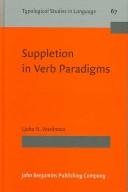| Listing 1 - 10 of 111 | << page >> |
Sort by
|
Book
Year: 1991 Publisher: Meinier : Art Bärtschi Compagnie,
Abstract | Keywords | Export | Availability | Bookmark
 Loading...
Loading...Choose an application
- Reference Manager
- EndNote
- RefWorks (Direct export to RefWorks)
Book
ISBN: 9529177631 9789529177639 Year: 2004 Publisher: [Helsinki] : Faculty of Arts,
Abstract | Keywords | Export | Availability | Bookmark
 Loading...
Loading...Choose an application
- Reference Manager
- EndNote
- RefWorks (Direct export to RefWorks)
Translations. --- Translating and interpreting --- Token Equivalence Method --- Vertalen --- Kwaliteit van de vertaling --- Translation Quotient --- lexical isomorphism --- Evaluation. --- kwaliteitszorg --- Token Equivalence Method. --- Kwaliteit van de vertaling. --- Translation Quotient. --- lexical isomorphism. --- kwaliteitszorg. --- Traductions --- Lexical isomorphism.
Book
Year: 1987 Publisher: Praha : Odeon,
Abstract | Keywords | Export | Availability | Bookmark
 Loading...
Loading...Choose an application
- Reference Manager
- EndNote
- RefWorks (Direct export to RefWorks)
Actors --- Acteurs --- Biography. --- Biographie --- Hübnerová, Marie,
Dissertation
Year: 1992 Publisher: [S.l.] [s.n.]
Abstract | Keywords | Export | Availability | Bookmark
 Loading...
Loading...Choose an application
- Reference Manager
- EndNote
- RefWorks (Direct export to RefWorks)

ISBN: 3631391986 Year: 2002 Publisher: Frankfurt am Main ; Berlin ; Bern Peter Lang
Abstract | Keywords | Export | Availability | Bookmark
 Loading...
Loading...Choose an application
- Reference Manager
- EndNote
- RefWorks (Direct export to RefWorks)

ISBN: 9027229791 9789027229793 9789027293268 9027293260 1282155385 9781282155381 9786612155383 6612155388 Year: 2006 Volume: 67 Publisher: Amsterdam Philadelphia John Benjamins
Abstract | Keywords | Export | Availability | Bookmark
 Loading...
Loading...Choose an application
- Reference Manager
- EndNote
- RefWorks (Direct export to RefWorks)
This book examines stem change in verb paradigms, as in English go 'go.PRESENT' vs. went 'go.PAST', a phenomenon referred to as suppletion in current linguistic theory. The work is based on a broad sample of 193 languages, and examines this long neglected phenomenon from a typological perspective. In addition to identifying types of suppletion which occur cross-linguistically, the study brings to light areal patterns of the occurrence of suppletive forms in verb paradigms. Several hypotheses as regards the diachronic development of suppletive forms are presented as well. The author also seeks to explore the methodological issues of evaluating the frequency of linguistic features in large language samples by introducing a method of weighting languages according to their genetic relatedness. All figures obtained in this way are compared to the proportions yielded by more familiar counting methods, and the results and implications of the different procedures are compared and discussed throughout.
Grammar --- Grammar, Comparative and general --- Verb --- Suppletion --- Verb phrase --- Verbals --- Reflexives --- Verb. --- Suppletion. --- Linguistics --- Philology
Book
ISBN: 3961103399 9783961103393 Year: 2022 Publisher: Berlin : Language Science Press,
Abstract | Keywords | Export | Availability | Bookmark
 Loading...
Loading...Choose an application
- Reference Manager
- EndNote
- RefWorks (Direct export to RefWorks)
In 1991, William Croft suggested that negative existentials (typically lexical expressions that mean 'not exist, not have') are one possible source for negation markers and gave his hypothesis the name Negative Existential Cycle (NEC). It is a variationist model based on cross-linguistic data. For a good twenty years following its formulation, it was cited at face-value without ever having been tested by (historical)-comparative data. Over the last decade, Ljuba Veselinova has worked on testing the model in a comparative perspective, and this edited volume further expands on her work. The collection presented here features detailed studies of several language families such as Bantu, Chadic and Indo-European. A number of articles focus on the micro-variation and attested historical developments within smaller groups and clusters such as Arabic, Mandarin and Cantonese, and Nanaic. Finally, variation and historical developments in specific languages are discussed for Ancient Hebrew, Ancient Egyptian, Moksha-Mordvin (Uralic), Bashkir (Turkic), Kalmyk (Mongolic), three Pama-Nyungan languages, O'dam (Southern Uto-Aztecan) and Tacana (Takanan, Amazonian Bolivia). The book is concluded by two chapters devoted to modeling cyclical processes in language change from different theoretical perspectives. Key notions discussed throughout the book include affirmative and negative existential constructions, the expansion of the latter into verbal negation, and subsequently from more specific to more general markers of negation. Nominalizations as well as the uses of negative existentials as standalone negative answers figure among the most frequent pathways whereby negative existentials evolve as general negation markers. The operation of the Negative Existential Cycle appears partly genealogically conditioned, as the cycle is found to iterate regularly within some families but never starts in others, as is the case in Bantu. In addition, other special negation markers such as nominal negators are found to undergo similar processes, i.e. they expand into the verbal domain and thereby develop into more general negation markers. The book provides rich information on a specific path of the evolution of negation, on cyclical processes in language change, and it show-cases the historical-comparative method in a modern setting.
Book
ISBN: 808538938X Year: 2005 Publisher: Praha : Čtyřlístek,
Abstract | Keywords | Export | Availability | Bookmark
 Loading...
Loading...Choose an application
- Reference Manager
- EndNote
- RefWorks (Direct export to RefWorks)
Book
ISBN: 8085389371 Year: 2005 Publisher: Praha : Čtyřlístek,
Abstract | Keywords | Export | Availability | Bookmark
 Loading...
Loading...Choose an application
- Reference Manager
- EndNote
- RefWorks (Direct export to RefWorks)
Book
Year: 1986 Publisher: Sofio Bulgara Esperantista Asocio
Abstract | Keywords | Export | Availability | Bookmark
 Loading...
Loading...Choose an application
- Reference Manager
- EndNote
- RefWorks (Direct export to RefWorks)
| Listing 1 - 10 of 111 | << page >> |
Sort by
|

 Search
Search Feedback
Feedback About UniCat
About UniCat  Help
Help News
News